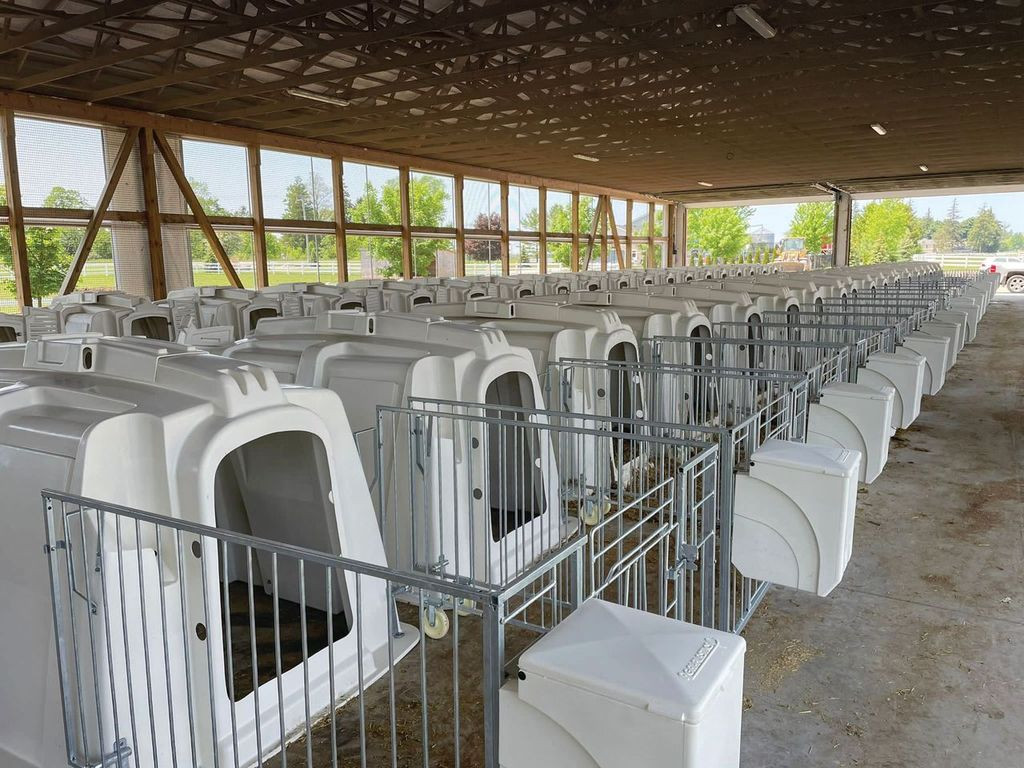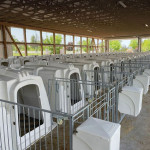Outdoor Calf Housing
To optimize outdoor calf housing for seasonal changes, focus on adjusting ventilation, insulation, and bedding to match the specific challenges of each season. Maintaining clean and comfortable conditions for your calves in outdoor housing sets the foundation for their growth and health.
Each season presents unique challenges - livestock operations should prepare and adjust their outdoor calf housing to keep their calves happy and healthy.
From the chilling winds of winter to the scorching heat of summer, the premium materials and thoughtful designs in all of Agri-Plastic's products keep your calves regulated and healthy while making it easier for you to monitor and maintain.
Let’s explore the key factors you should consider to keep your calves thriving, no matter the season!
Key Takeaways for Outdoor Calf Housing
- Maintain optimal temperatures: Adjust housing setups seasonally to keep calves within their thermal neutral zone.
- Prioritize ventilation: Use adjustable vents and barriers to balance airflow and warmth, preventing respiratory issues.
- Position for protection: Place hutches strategically to shield calves from harsh winds in winter and direct sunlight in summer.
- Adapt insulation: Increase insulation during colder months to retain heat and consider cooling options for summer.
- Monitor and adjust regularly: Conduct weekly checks to make necessary adjustments for changing weather conditions.
Summary of Seasonal Considerations for Outdoor Calf Housing
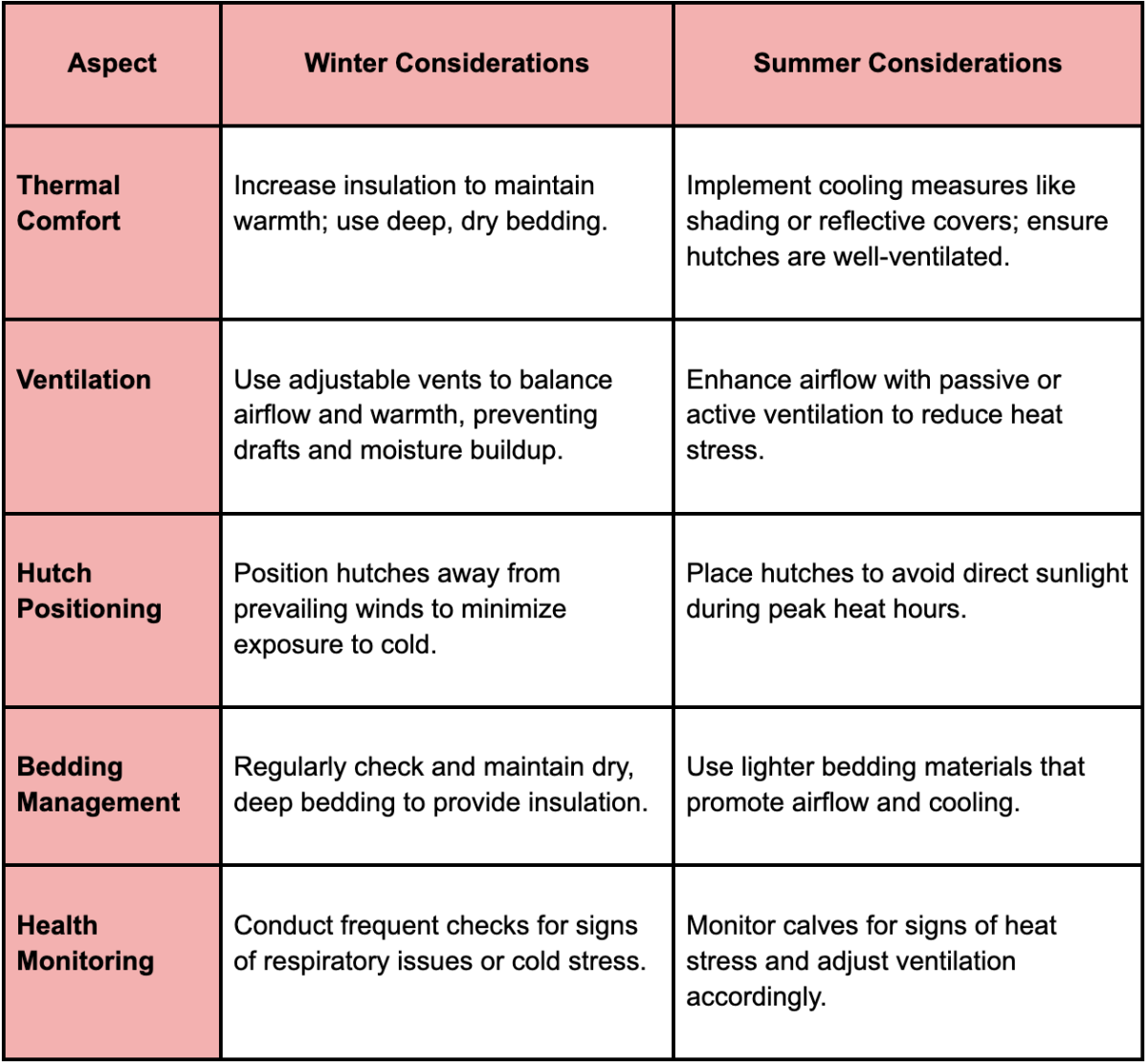
Understanding the Thermal Neutral Zone for Calves
Calves thrive in what is known as the thermal neutral zone—a temperature range where they don’t need to expend extra energy to stay warm or cool.
For calves, this range typically falls between 59°F and 77°F (15°C and 25°C).
However, factors like age, hair coat, and body fat can affect this zone.
Newborn calves have minimal body fat, and are especially vulnerable to cold. Before they start digesting solid food, they also miss out on the warmth generated by rumen fermentation—a disadvantage in the cold but beneficial in hotter weather.
In recent years, research has expanded our understanding of this zone. The 2021 Dairy NASEM increased the upper limit to 79°F (26°C), recognizing that calves might start feeling heat stress sooner than previously thought.
In fact, more recent studies suggest that calves can begin showing signs of thermal stress at temperatures as low as 70°F (21°C), highlighting the need for careful environmental management throughout the year.
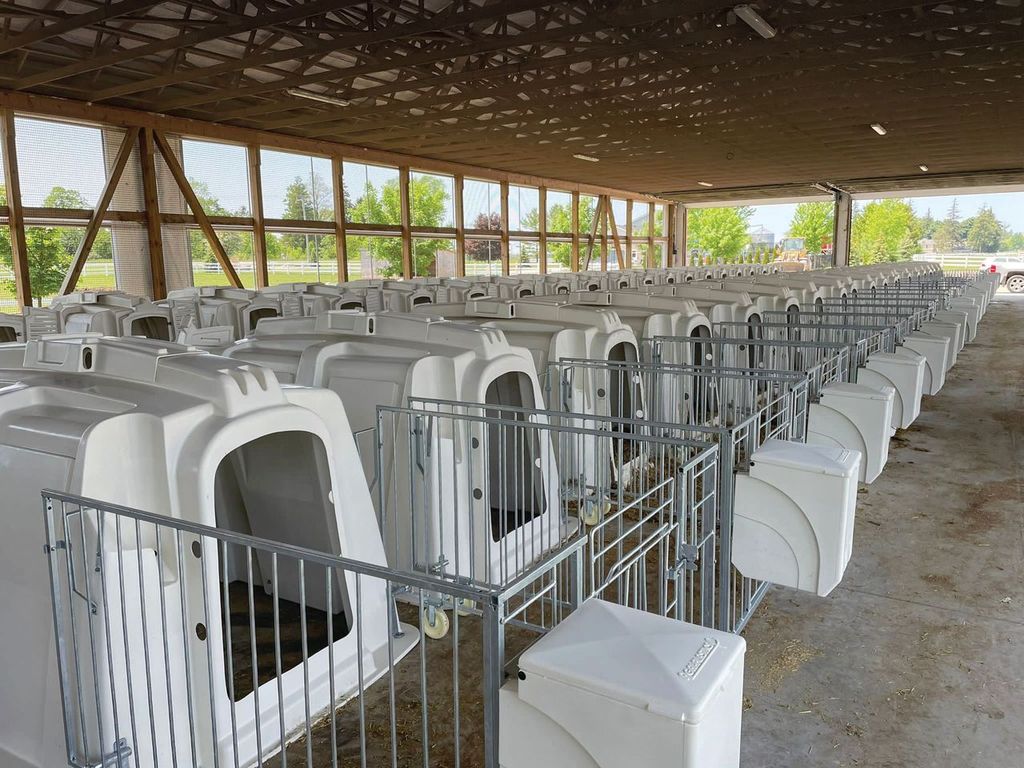
Preparing Outdoor Calf Housing for Winter
Winters, especially in northern or particularly harsh areas, can be hard on calves. Cold temperatures can severely affect them. Various considerations go into finding the best setup for your operation.
Start by positioning the hutches in a sheltered area away from prevailing winds. Add insulation to the floors and walls to retain heat and maintain ventilation to keep them pleasant, healthy, and dry.
Respiratory issues are a risk of excessive moisture in the air. Regularly check and adjust the ventilation settings to balance warmth and air circulation.
Winter Preparation Checklist
- Sheltered Positioning: Place hutches to block winter winds.
- Added Insulation: Line walls and floors to keep in warmth.
- Ventilation Management: Adjust vents to prevent moisture without losing heat.
- Bedding Maintenance: Keep bedding dry and deep for additional insulation.
- Regular Inspections: Check housing conditions frequently during extreme weather.
Importance of Winter Ventilation in Outdoor Calf Housing
Poor ventilation during winter can lead to moisture buildup inside the hutch.
Close, wet environments are a breeding ground for harmful bacteria and respiratory issues in calves. Draft-free environments are essential to maintain air quality while keeping the hutch warm.
Proper ventilation is about maintaining a balance between warmth and fresh air. This balance helps to keep calves healthy throughout the colder months. (1)
Key Ventilation Risks
- Moisture Buildup: Leads to bacterial growth and respiratory issues.
- Drafts: Can chill calves and weaken their immune systems.
- Stale Air: Increases the risk of disease spread within the hutch.
Ventilation Techniques
Improving air circulation without compromising warmth requires a combination of techniques.
Start by adjusting the vents to allow for controlled airflow. You can also use barriers to prevent direct drafts from reaching the calves.
During particularly cold spells, consider temporarily reducing ventilation to conserve heat, but always monitor for moisture buildup.
Key Ventilation Methods
- Adjustable Vents: Control airflow to match weather conditions.
- Barrier Placement: Prevents drafts from directly hitting calves.
- Temporary Vent Reductions: Helps conserve warmth during extreme cold.
Managing Summer Heat in Outdoor Calf Housing
Summer brings its own set of challenges - heat stress being a significant concern.
Calves are particularly vulnerable to high temperatures. Calves exposed to excessive heat can show decreased feed intake and slower growth.
Providing adequate ventilation is key to keeping hutches cool. Both passive and active ventilation systems offer solutions, but the right choice depends on your specific needs and climate.
Comparison of Ventilation Options
|
Ventilation System |
Airspeed |
Temperature Control |
Noise Level |
|
Passive Ventilation |
Low |
Moderate |
Silent |
|
Active Ventilation |
High |
Superior |
Noisy |
The Role of Active Ventilation in Summer
Active ventilation systems can significantly reduce heat stress by increasing airflow within the hutch.
These systems use fans to boost air circulation and maintain lower internal temperatures even on the hottest days. However, they do come with trade-offs, such as increased noise levels and higher energy costs compared to passive systems.
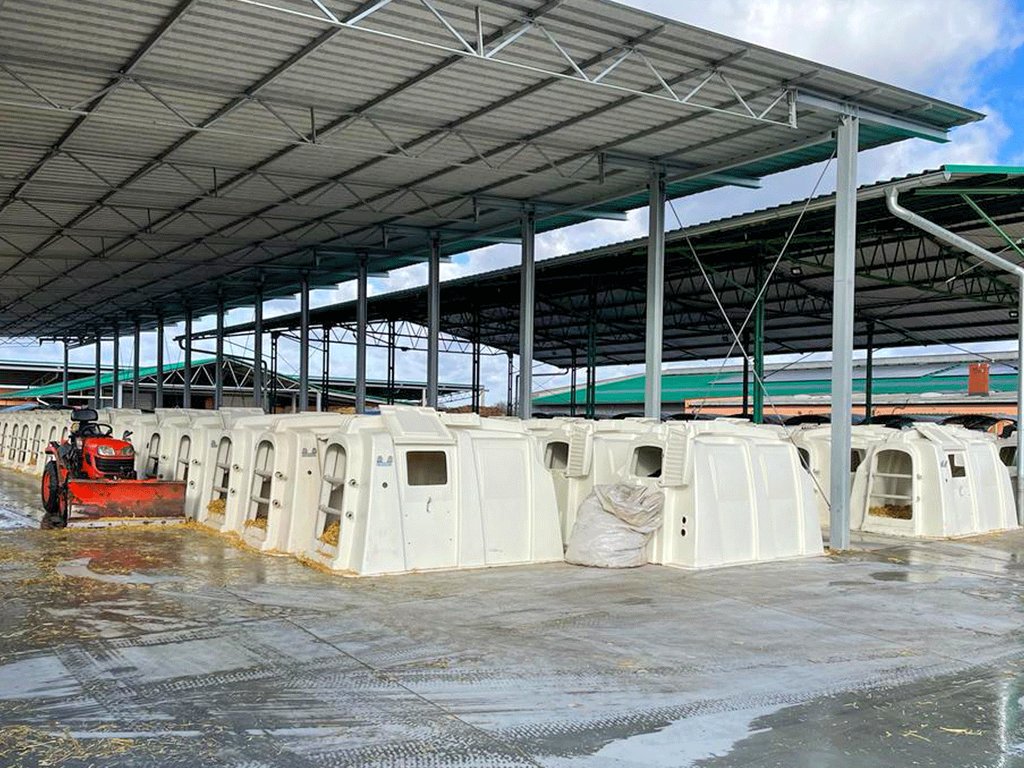
Paired vs. Individual Calf Housing: Adapting to Seasonal Changes
Choosing between paired and individual calf housing systems requires careful consideration of seasonal impacts.
Each option has its strengths depending on the weather and specific needs of your calves.
Below is a comparison to help you decide which approach might work best for your operation as the seasons change.
|
Aspect |
Paired Housing |
Individual Housing |
|
Thermal Regulation |
Paired calves can huddle together for warmth during winter, reducing the need for additional insulation. |
Individual calves may require more insulation and bedding to maintain warmth. |
|
Ventilation Needs |
Requires careful management to prevent moisture buildup and drafts affecting both calves. |
Easier to control ventilation on a per-calf basis, minimizing the risk of cross-contamination. |
|
Social Interaction |
Provides socialization benefits, which can reduce stress during cold weather but may increase heat stress in summer. |
Reduced social stress, but calves may experience more cold stress without a companion. |
|
Health Monitoring |
Shared space can make it harder to detect early signs of illness, especially respiratory issues. |
Easier to monitor individual health, making it simpler to adjust care during extreme weather conditions. |
|
Feeding and Growth |
Paired housing may lead to competition for resources, impacting growth rates in harsh seasons. |
Individual housing allows for controlled feeding, which can be critical during temperature extremes. |
Practical Tips for Year-Round Calf Housing Management
Maintaining calf health throughout the year requires consistent attention to their housing environment.
Your approach needs to be dynamic and responsive to seasonal changes.
- Regular Inspections: Check housing conditions weekly.
- Seasonal Adjustments: Adapt ventilation and insulation as needed.
- Bedding Management: Keep bedding dry and deep.
- Monitor Health: Regularly assess calves for signs of stress.
- Flexible Housing Solutions: Use adaptable equipment that works for all seasons.
Final Thoughts: Optimizing Outdoor Calf Housing for Seasonal Changes
Maintaining a healthy livestock operation is much more efficient and profitable when you implement an optimized calf housing system. Happy cows are healthy cows. Happy farmers make happy consumers. It’s a win-win.
Calf health, growth, and overall well-being is much easier to maintain with Agri-Plastic’s premium calf housing products. We are dedicated to providing farmers with top-quality indoor and outdoor calf housing systems and accessories.
Check out our wide range of options on our website.
Reference
- Penn State, Winter Ventilation of Calf Housing, https://extension.psu.edu/winter-ventilation-of-calf-housing
